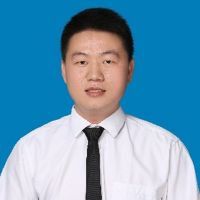Advanced Technologies and Applications in Wireless Power Transfer Systems
A special issue of Electronics (ISSN 2079-9292). This special issue belongs to the section "Power Electronics".
Deadline for manuscript submissions: closed (28 February 2023) | Viewed by 1924
Special Issue Editors
Interests: wireless power transfer; energy harvesting for sensors; power electronics; electric vehicles
Special Issues, Collections and Topics in MDPI journals
Interests: wireless power transfer; power electronics; transportation electrification
Special Issues, Collections and Topics in MDPI journals
Interests: capacitive power transfer; wireless power and signal transfer
Special Issues, Collections and Topics in MDPI journals
Special Issue Information
Dear Colleagues,
Wireless power transfer (WPT) has rapidly advanced over the past decade and continues to do so. Under the attention of more and more researchers, this technology has shown broad application prospects in different fields from milliwatts to megawatts and from near-field to far-field, such as sensors, medical implants, consumer electronics, household appliances, electric vehicles, aerospace, ocean exploration, railway applications, etc. With the advancement in power semiconductor devices, magnetic materials, topologies, coupling interfaces and control strategies, WPT technology has made continuous breakthroughs in transmission power, efficiency, distance, and system anti-interference and integration, etc. This Special Issue, entitled “Advanced Technologies and Applications in Wireless Power Transfer Systems”, focuses on the recent theoretical and applied research achievements of WPT, including, but not limited to, system sub-modules such as power converters, compensation networks, coupling interfaces, controllers, etc., as well as auxiliary functions such as power/signal parallel transmission, foreign-object detection, position monitoring, etc. In addition, articles which discuss the application of WPT technology would also be of particular interest.
We invite original manuscripts presenting recent advances in this area including, but not limited to, the following topics:
- Wireless power transfer for land transportation (E-bikes, electric vehicles, rail transit, etc.);
- Wireless power transfer for underwater vehicles;
- Wireless power transfer for aircraft (unmanned aerial vehicles, aerospace, etc.);
- Wireless power transfer for household appliances;
- Wireless power transfer for consumer electronics;
- Wireless power transfer for biomedical implant devices;
- Wireless power transfer for Internet of Things (IoTs) and sensors;
- Advanced converter, compensation, coupler and controller for wireless power transfer;
- Capacitive power transfer;
- Ultrasonic power transfer;
- Energy harvesting;
- Power and signal parallel transmission for wireless power transfer;
- Foreign object detection for wireless power transfer;
- Position monitoring for wireless power transfer.
Dr. Yong Li
Prof. Dr. Ruikun Mai
Dr. Wei Zhou
Guest Editors
Manuscript Submission Information
Manuscripts should be submitted online at www.mdpi.com by registering and logging in to this website. Once you are registered, click here to go to the submission form. Manuscripts can be submitted until the deadline. All submissions that pass pre-check are peer-reviewed. Accepted papers will be published continuously in the journal (as soon as accepted) and will be listed together on the special issue website. Research articles, review articles as well as short communications are invited. For planned papers, a title and short abstract (about 100 words) can be sent to the Editorial Office for announcement on this website.
Submitted manuscripts should not have been published previously, nor be under consideration for publication elsewhere (except conference proceedings papers). All manuscripts are thoroughly refereed through a single-blind peer-review process. A guide for authors and other relevant information for submission of manuscripts is available on the Instructions for Authors page. Electronics is an international peer-reviewed open access semimonthly journal published by MDPI.
Please visit the Instructions for Authors page before submitting a manuscript. The Article Processing Charge (APC) for publication in this open access journal is 2400 CHF (Swiss Francs). Submitted papers should be well formatted and use good English. Authors may use MDPI's English editing service prior to publication or during author revisions.
Keywords
- wireless power transfer
- inductive power transfer
- contactless power transfer
- wireless charging
- capacitive power transfer
- energy harvesting
- power electronics
- magnetic field coupling
- electric field coupling







